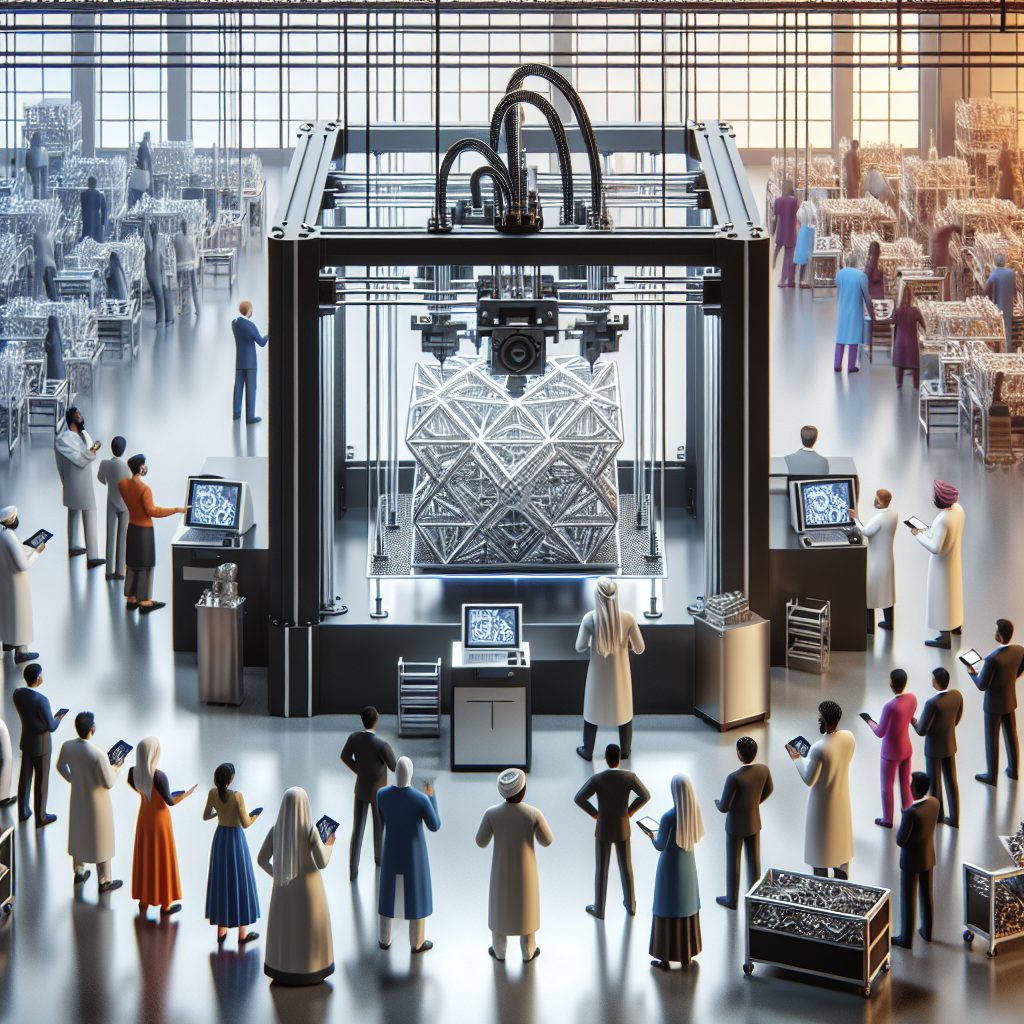Introduction
3D printing, also known as additive manufacturing, has emerged as a transformative technology in the manufacturing sector. This innovative process allows for the creation of three-dimensional objects by layering materials based on digital models. Since its inception, 3D printing has steadily evolved, impacting various industries significantly. In this article, we’ll delve into the influence of 3D printing on the future of manufacturing, exploring its benefits, challenges, and implications for businesses.
Understanding 3D Printing
3D printing represents a departure from traditional subtractive manufacturing methods where material is removed from a solid block. Instead, it builds objects layer by layer from raw materials such as plastic, metal, or ceramics. Various 3D printing technologies include:
- Fused Deposition Modeling (FDM): This is the most common form of 3D printing, which uses thermoplastic filament.
- Stereolithography (SLA): A process that uses ultraviolet light to cure liquid resin into hardened plastic.
- Selective Laser Sintering (SLS): Utilizes lasers to fuse powdered materials together.
- Digital Light Processing (DLP): Similar to SLA, but uses a digital light projector to cure resin.
Benefits of 3D Printing in Manufacturing
The implementation of 3D printing within manufacturing processes offers numerous advantages:
1. Cost-Effectiveness
3D printing can significantly reduce production costs. Traditional manufacturing often involves high setup costs, tooling, and waste production. In contrast, 3D printing minimizes material waste since it uses only the necessary materials for production. It’s particularly advantageous for low-volume production runs and custom products.
2. Speed and Efficiency
Speed is another critical advantage. 3D printing processes can drastically shorten the time from design to production. Rapid prototyping allows manufacturers to create and test designs quickly, accelerating time-to-market for new products.
3. Design Freedom
3D printing enables designers to create complex geometries and intricate designs that would be impossible or prohibitively expensive with traditional manufacturing methods. This flexibility allows for greater creativity and innovation in product development.
4. Customization
3D printing excels in producing customized products tailored to individual customer needs. This capability is particularly beneficial in industries like healthcare, where personalized medical devices can be produced with specific measurements and designs.
5. Supply Chain Simplification
With 3D printing, manufacturers can potentially simplify their supply chains. On-demand production reduces the need for large inventories and long lead times. Parts can be printed on-site or closer to their final destinations, minimizing shipping costs and delays.
Challenges Facing 3D Printing
Despite its numerous benefits, the adoption of 3D printing in manufacturing is not without challenges:
1. Material Limitations
While the range of materials available for 3D printing continues to grow, there are still limitations compared to traditional manufacturing materials. Not all materials have suitable properties for all applications, which can restrict usage.
2. Technical Expertise
There is a learning curve associated with 3D printing technologies. Businesses might face challenges in finding personnel with the necessary technical expertise to operate and maintain 3D printing systems.
3. Regulatory Issues
As 3D printing technologies advance, regulatory frameworks have not kept pace. Issues such as intellectual property rights, quality assurance, and product safety require careful consideration, especially in regulated industries like aerospace and healthcare.
4. Scalability
While 3D printing excels in small-batch production and prototyping, scaling up production for high-volume manufacturing can be challenging. Ensuring consistency and efficiency at scale can require significant investments and adjustments.
Future Trends in 3D Printing
The future of manufacturing will undoubtedly be shaped by advancements in 3D printing technology. Here are some emerging trends:
1. Industry 4.0 Integration
3D printing is expected to become a key component of Industry 4.0, where manufacturing processes are interconnected through the Internet of Things (IoT) and big data. This integration will allow for smarter, data-driven decision-making and enhanced operational efficiencies.
2. Bioprinting
The field of bioprinting holds promise for the future, particularly in healthcare. This technology enables the printing of biocompatible tissues and organ-like structures for medical applications, potentially revolutionizing regenerative medicine and transplants.
3. Larger Scale Printing
As technology advances, we can expect to see larger 3D printers capable of producing significant components, like building materials or automotive parts. This will further broaden the application of 3D printing across industries.
4. Sustainability Efforts
With an increasing focus on sustainability, 3D printing can contribute to eco-friendly manufacturing practices. By reducing waste, utilizing recycled materials, and allowing for localized production, it can help manufacturers lessen their environmental footprint.
Conclusion
3D printing is set to have a profound impact on the future of manufacturing. By offering cost-effective, efficient, and flexible production methods, it empowers businesses to innovate and respond to the ever-changing market demands. While challenges remain, the ongoing advancements in 3D printing technology will likely unlock new possibilities, driving the evolution of the manufacturing landscape for years to come.

